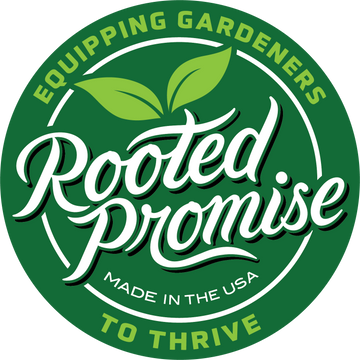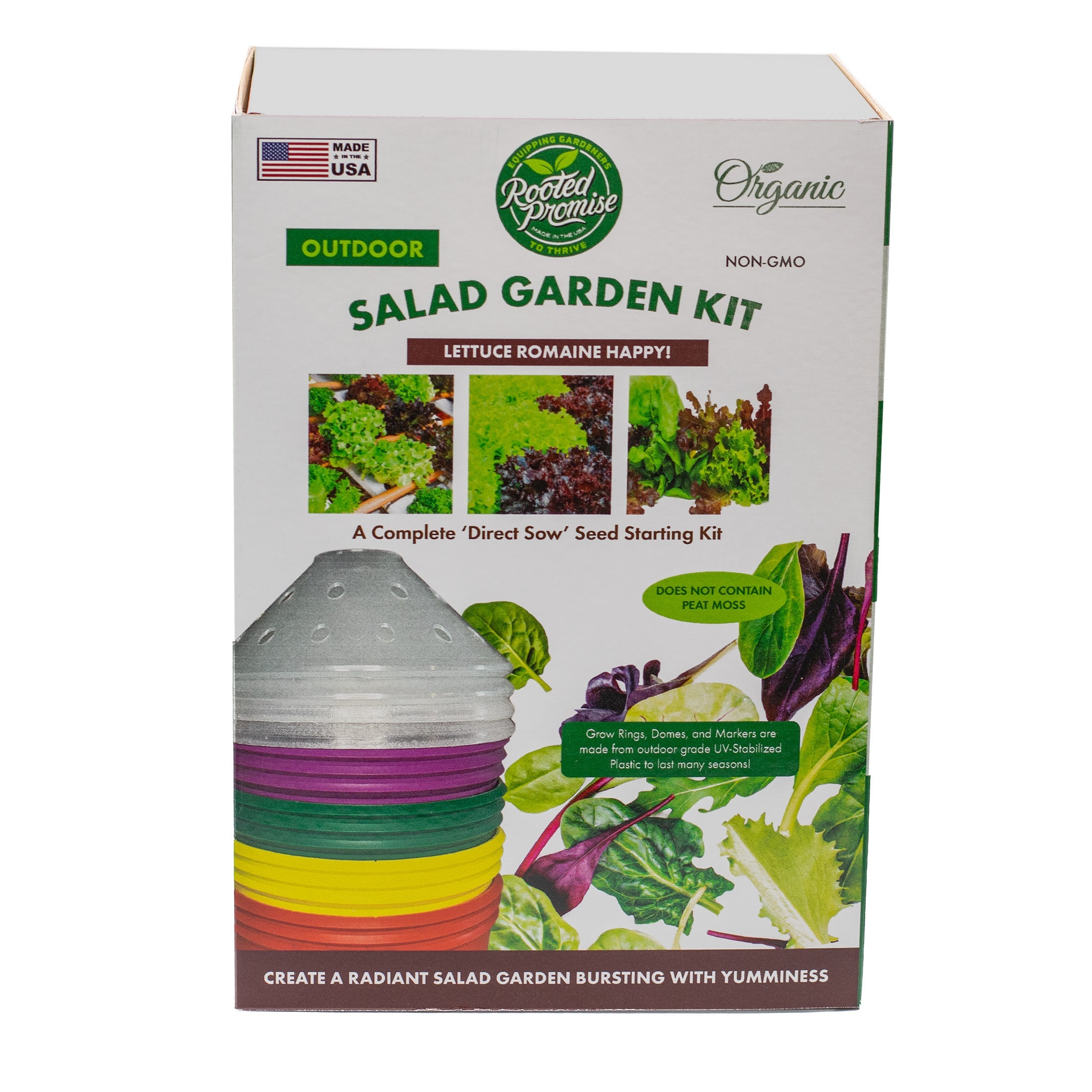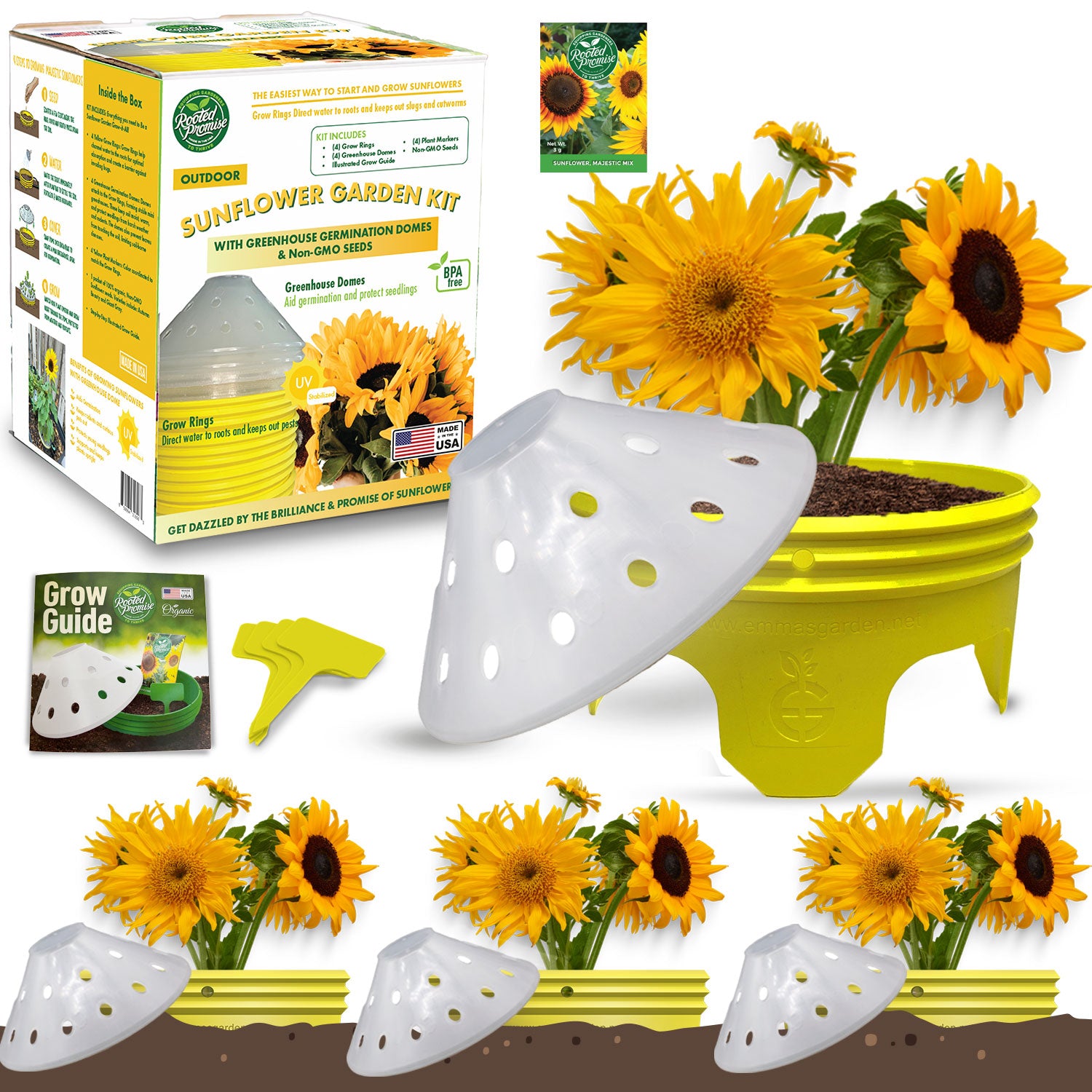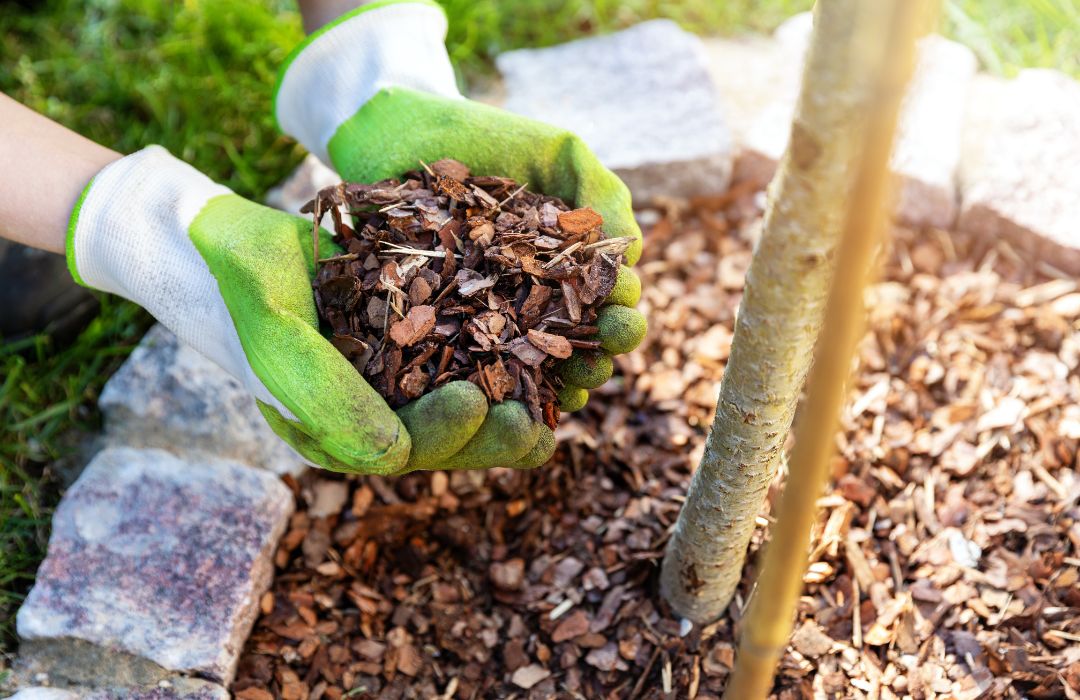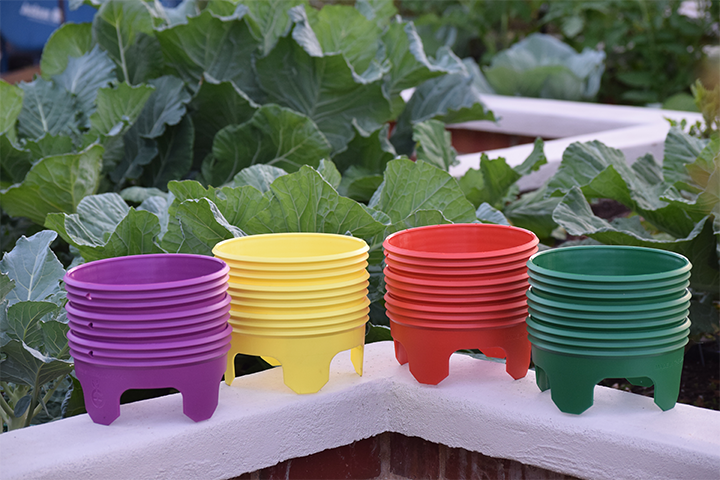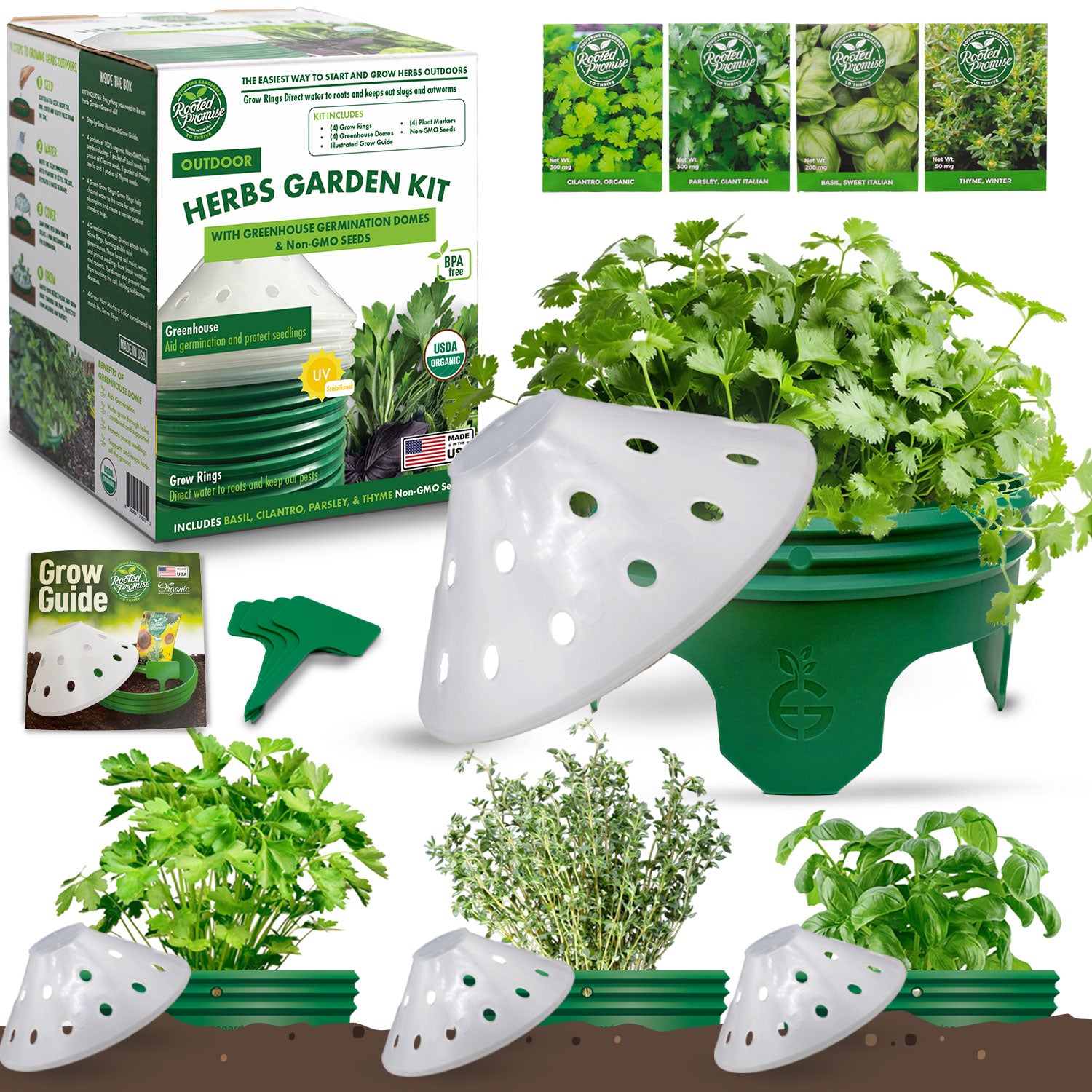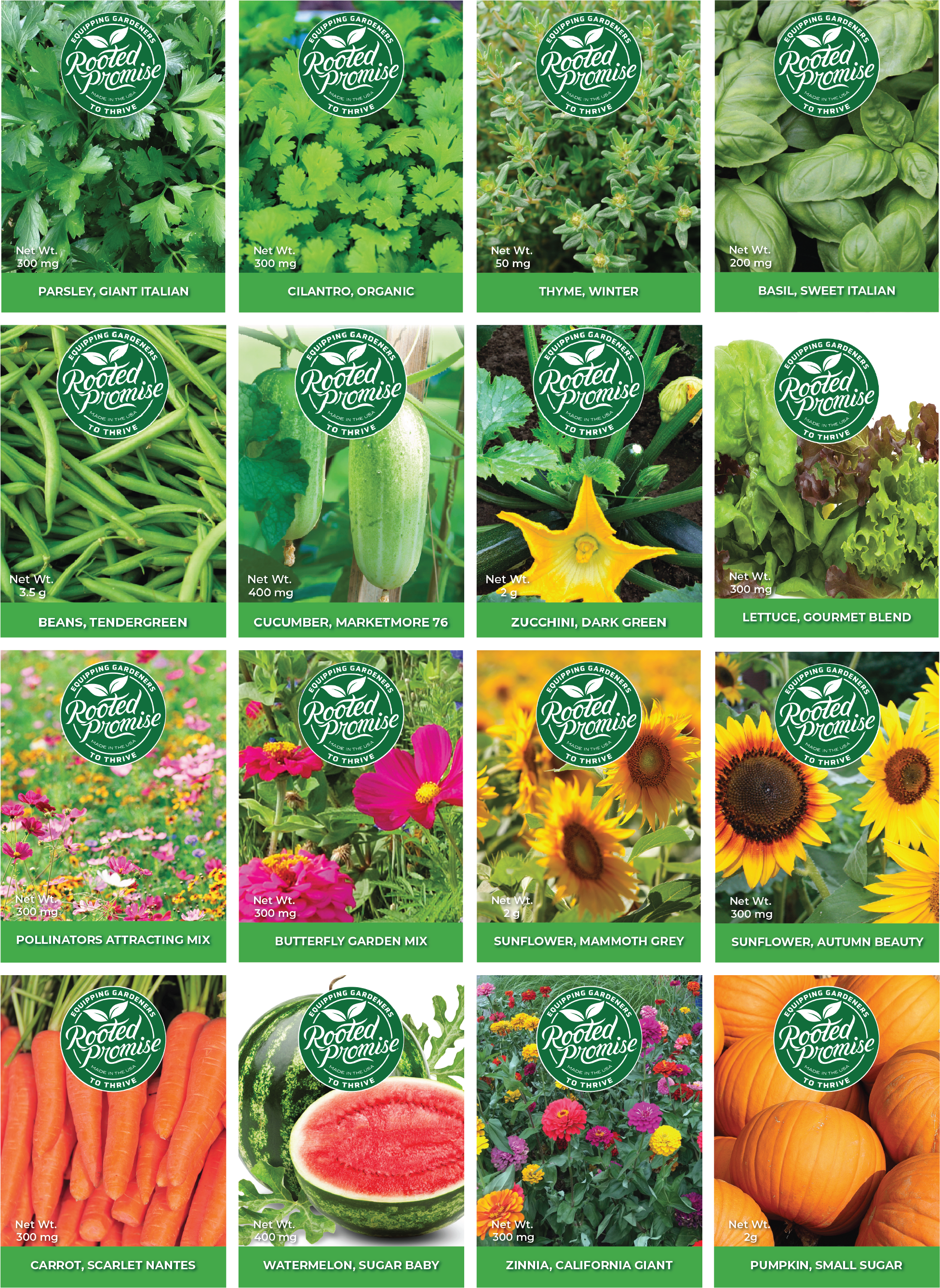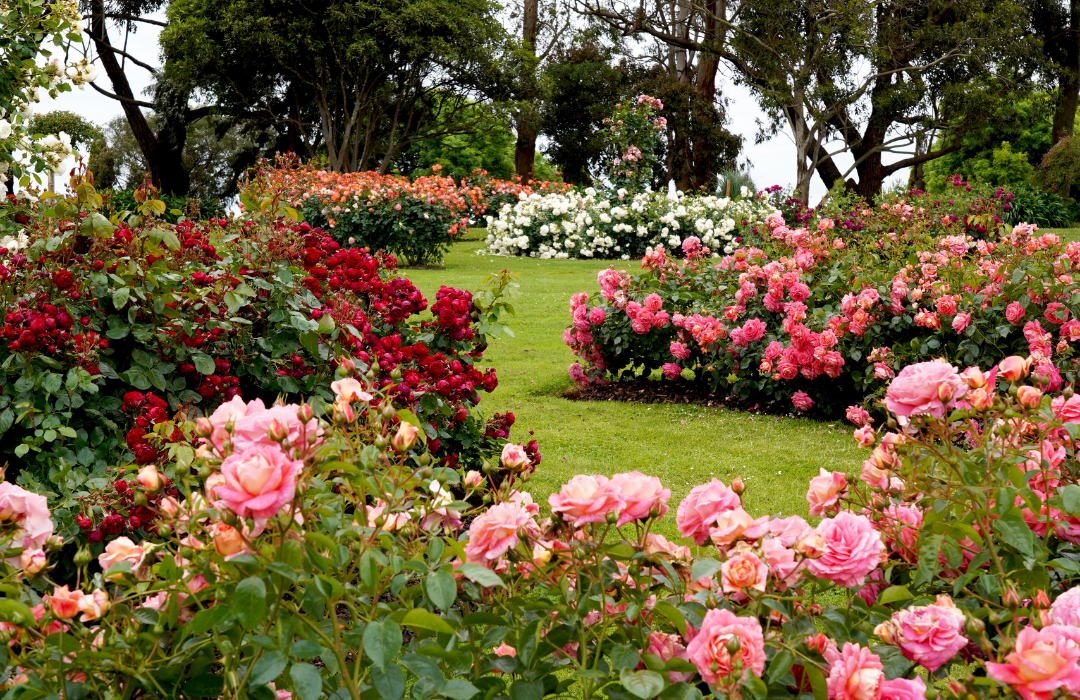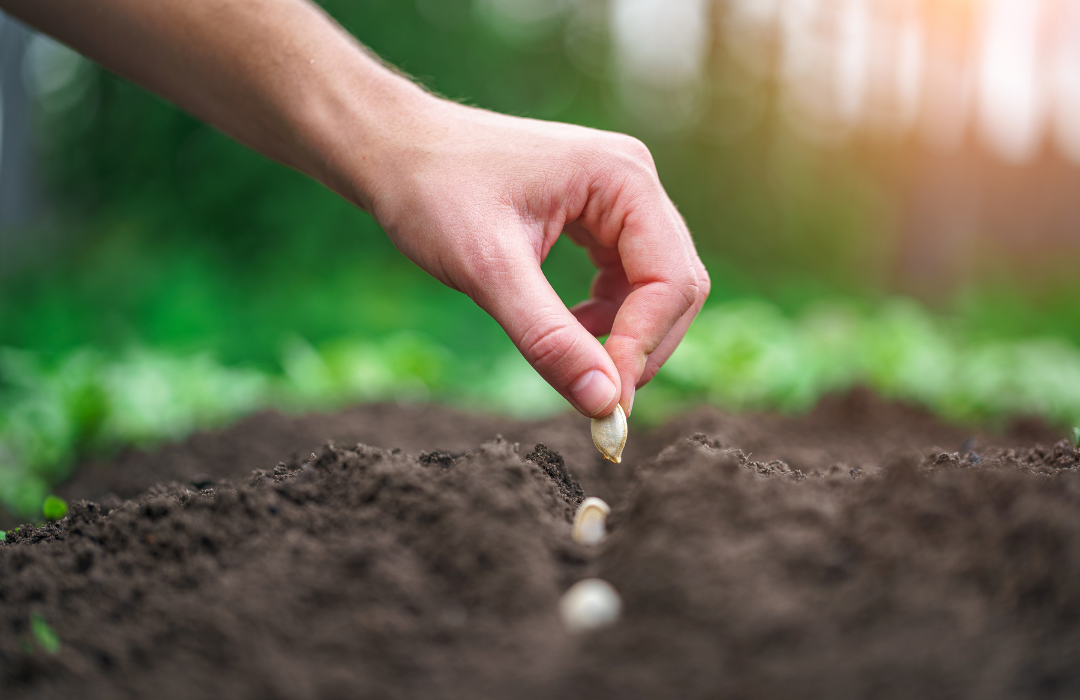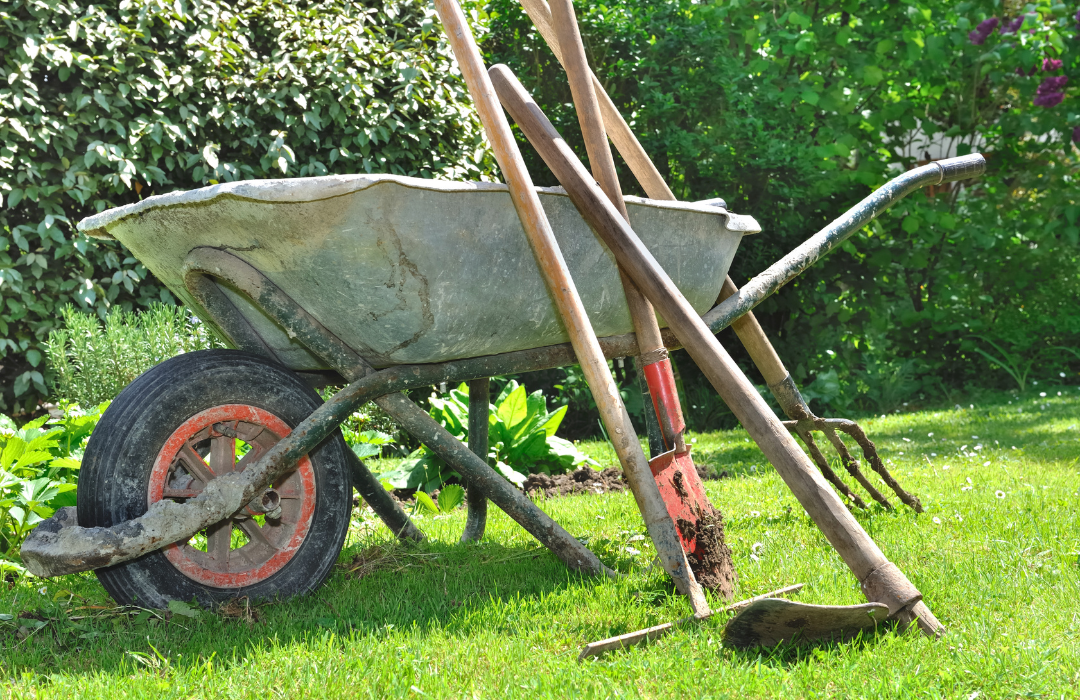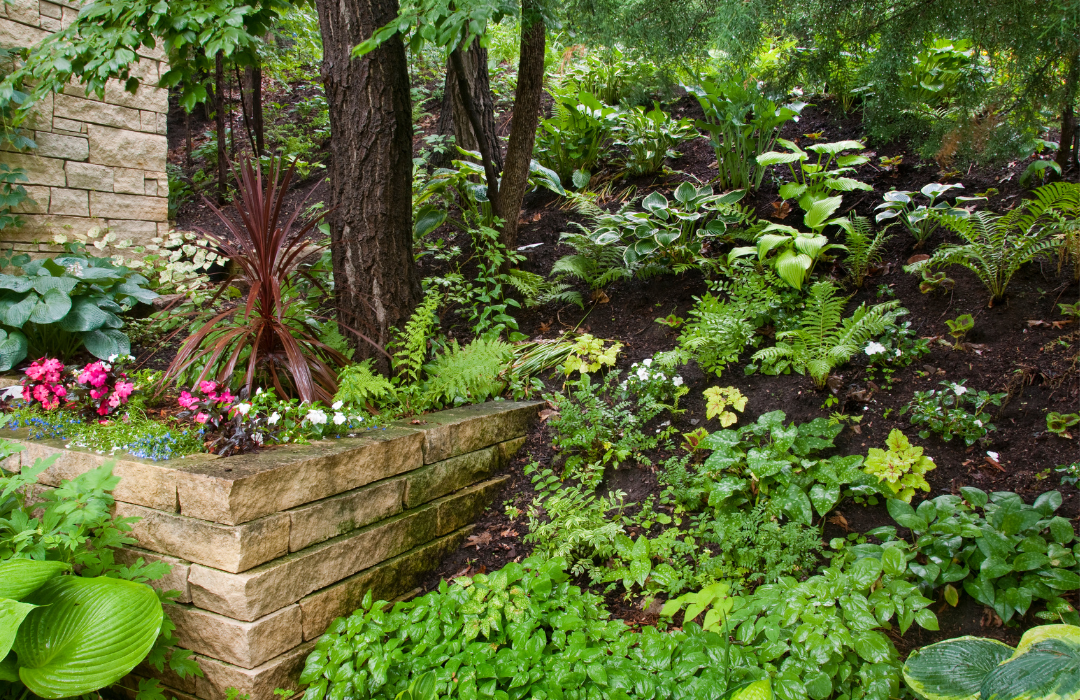Table of contents
- Introduction
- What is Mulching?
- Definition of Mulching
- Benefits of Mulching
- Types of Mulch
- Organic Mulch
- Inorganic Mulch
- How to Choose the Right Mulch for Your Garden?
- Factors to Consider
- Climate and Soil Type
- Plant Needs
- Step-by-Step Process to Mulch Your Garden
- Preparing the Soil
- Applying the Mulch
- Mulch Maintenance
- Common Mistakes to Avoid When Mulching
- Over-Mulching
- Incorrect Mulch Application
- Organic vs. Inorganic Mulch: Pros and Cons
- Advantages of Organic Mulch
- Disadvantages of Organic Mulch
- Advantages of Inorganic Mulch
- Disadvantages of Inorganic Mulch
- Mulching Tips for Specific Plants
- Mulching Flower Beds
- Mulching Vegetable Gardens
- Mulching Trees and Shrubs
- Eco-Friendly Mulching Options
- Using Compost
- Recycling Yard Waste
- Mulching with Newspaper and Cardboard
- Key Takeaways
- Conclusion
Introduction
Mulching is more than just a cosmetic treatment for your garden; it is a vital practice that can significantly impact plant health and soil quality. Whether you're a seasoned gardener or a budding enthusiast, understanding how to mulch effectively can make all the difference in achieving a thriving garden.
In this comprehensive guide, we'll explore the best ways to mulch a garden, delving into the different types of mulch, their benefits, and how to choose the right one for your garden's unique needs. We'll also provide practical steps on how to apply mulch correctly, avoid common mistakes, and even consider eco-friendly mulching options.
By the end of this journey, you'll have all the knowledge you need to transform your garden into a flourishing oasis. So, let's uncover the secrets of successful mulching!
For more information on gardening practices, you may refer to the Gardening Know How website or the United States Environmental Protection Agency.
What is Mulching?
Mulching is like giving your garden a cozy blanket, protecting the soil and plants from harsh environmental conditions. But what exactly does this process entail, and why is it so crucial for gardening success?
Definition of Mulching
At its core, mulching involves covering the soil with a layer of material to conserve moisture, improve soil health, reduce weed growth, and enhance the visual appeal of the area. This material can be organic or inorganic, each offering unique benefits and uses. For a deeper dive into the definition and importance of mulching, check out the Wikipedia page on Mulching.
Benefits of Mulching
The benefits of mulching are manifold, transforming your garden into a thriving ecosystem. Here are some of the primary advantages:
- Moisture Retention:Mulch acts as a barrier, reducing water evaporation and helping the soil retain moisture. This is particularly beneficial in arid climates or during dry spells.
- Weed Suppression:A layer of mulch can prevent weed seeds from getting the sunlight they need to germinate, thus reducing the need for weed control.
- Soil Health Improvement:Organic mulches decompose over time, adding valuable nutrients to the soil and improving its structure and fertility. For more on soil health, visit the Natural Resources Conservation Service.
- Temperature Regulation:Mulch helps keep soil temperatures consistent, protecting plant roots from extreme temperature fluctuations.
- Erosion Control:By covering the soil, mulch helps prevent erosion caused by wind and rain.
- Visual Appeal:Mulch can enhance the aesthetic appeal of your garden, giving it a neat and polished look.
Understanding these benefits underscores why mulching is a cornerstone of effective gardening practices.
For further reading on the benefits and techniques of mulching, consider resources from the Extension Foundation or the USDA National Agricultural Library.
Types of Mulch
The world of mulching is vast and varied, offering a plethora of options to suit different gardening needs. From the rich, organic hues of decomposing leaves to the sleek, modern look of gravel, the type of mulch you choose can significantly influence your garden's health and aesthetics. Let's delve into the two main categories of mulch: organic and inorganic.
Organic Mulch
Organic mulch is like nature's gift to your garden, composed of natural materials that decompose over time, enriching the soil with nutrients. Here are some popular types of organic mulch:
- Wood Chips and Bark:These are ideal for landscaping and around trees and shrubs. They decompose slowly, providing long-term benefits. For more on wood mulch, refer to the Harvard Arboretum.
- Straw:Excellent for vegetable gardens, straw decomposes relatively quickly and adds organic matter to the soil.
- Grass Clippings:A readily available option, grass clippings are best used in thin layers to avoid matting that can impede water and air flow.
- Compost:Rich in nutrients, compost is a versatile mulch that improves soil structure and fertility. Learn more about composting at the EPA's Composting at Home
- Leaf Mulch:Fallen leaves can be shredded and used as mulch, providing a free and effective way to nourish your garden.
Inorganic Mulch
Inorganic mulch, while not adding nutrients to the soil, offers other valuable benefits such as durability and weed suppression. Here are some common types of inorganic mulch:
- Gravel and Stone:Ideal for pathways and around succulent gardens, gravel and stone mulches offer excellent drainage and a clean, modern look.
- Plastic Mulch:Often used in commercial agriculture, plastic mulch helps retain soil moisture and control weeds. However, it can also increase soil temperature, which may not be suitable for all plants.
- Landscape Fabric:Used primarily for weed control, landscape fabric is a breathable option that allows water and air to reach the soil.
- Rubber Mulch:Made from recycled rubber, this mulch is durable and effective for playgrounds and pathways. For more on the environmental impact of rubber mulch, visit the EPA Recycling Basics
Choosing between organic and inorganic mulch depends on your garden's specific needs and your long-term goals. Each type offers unique benefits.
For more detailed information on the types of mulch, consider resources from the University of Nevada Cooperative Extension or the National Institute of Food and Agriculture.
How to Choose the Right Mulch for Your Garden?
Choosing the right mulch is like finding the perfect partner for your garden—a union that can help it thrive and flourish. But how do you make this crucial decision?
Factors to Consider
When choosing mulch, several factors come into play. Understanding these can help you make an informed decision that benefits both your plants and the overall aesthetic of your garden:
- Cost:Your budget will significantly influence your choice. Organic mulches like grass clippings or leaves can be cost-effective, while premium options like cedar bark may be more expensive. For insights on budgeting for garden supplies, visit the Extension Foundation's Gardening Resources.
- Availability:Consider what's readily available in your area. Sometimes, the best mulch is the one that's most accessible to you.
- Purpose:Are you aiming to enhance soil fertility, control weeds, or improve the visual appeal of your garden? Different mulches serve different purposes.
- Longevity:Inorganic mulches like stone or rubber last longer than organic ones, which decompose over time. Decide based on how frequently you’re willing to replenish the mulch.
- Environmental Impact:Consider the sustainability of your mulch choice. Organic mulches are eco-friendly, while some inorganic options may have environmental drawbacks. For more on sustainable gardening practices, visit the EPA's Greener Living
Climate and Soil Type
The climate and soil type in your region can also dictate the best mulch for your garden. In arid climates, mulches that retain moisture, like straw or wood chips, can be beneficial. In contrast, regions with heavy rainfall might benefit from gravel or stone mulches that improve drainage. For region-specific gardening advice, check out the USDA Plant Hardiness Zone Map.
Plant Needs
Different plants have different mulching requirements. For instance, vegetable gardens may thrive with compost or straw, while ornamental gardens might benefit from the aesthetic and slow-decomposing qualities of bark mulch. Understanding your plants' specific needs can help you choose the most suitable mulch. For detailed plant care guides, you can refer to the USDA National Agricultural Library.
By considering these factors—cost, availability, purpose, longevity, environmental impact, climate, soil type, and plant needs—you can make a well-informed decision that ensures your garden's health and beauty.
Step-by-Step Process to Mulch Your Garden
Mulching your garden is akin to giving it a protective and nourishing embrace. But how do you ensure you're doing it right? Follow this step-by-step process to mulch your garden effectively and enjoy the benefits it brings to your plants and soil.
Preparing the Soil
Before you lay down the mulch, it's essential to prepare the soil properly. Think of it as setting the stage for a grand performance. Here’s how you can do it:
- Clear the Area:Remove any weeds, debris, or old mulch from the area. This ensures that the new mulch has direct contact with the soil, maximizing its effectiveness. For more tips on weed control, visit the EPA's Safe Pest Control
- Water the Soil:Moist soil helps to establish a good foundation for the mulch. Water the area thoroughly before applying the mulch.
- Fertilize if Needed:If your soil needs a nutrient boost, consider adding compost or a slow-release fertilizer. This can provide an extra layer of nourishment for your plants.
Applying the Mulch
With the soil prepped and ready, it’s time to apply the mulch. This step is crucial for ensuring that your garden gets the full benefits of mulching:
- Spread Evenly:Apply the mulch in an even layer, typically about 2-3 inches thick. Too thin, and it won't be effective; too thick, and it can suffocate the plants.
- Keep Away from Stems:Avoid piling mulch directly against plant stems or tree trunks, as this can lead to rot and pest issues. Leave a small gap around the base of each plant.
- Cover the Entire Area:Ensure that the entire garden bed is covered, but be mindful not to over-mulch. Over-mulching can lead to waterlogged soil and root problems.
Mulch Maintenance
Mulching isn’t a set-it-and-forget-it task. Ongoing maintenance is necessary to keep your garden in top shape:
- Replenish Regularly:Organic mulches decompose over time, so you'll need to replenish them periodically to maintain their effectiveness.
- Monitor for Pests:Keep an eye out for pests that may take up residence in the mulch. If you notice any issues, refer to resources like the EPA's Safe Pest Control for guidance.
- Adjust Seasonally:In colder climates, consider adding an extra layer of mulch in the fall to protect plants' roots from freezing temperatures. In the spring, thin out the mulch to prevent overheating.
By following these steps, you can ensure that your mulching efforts yield a healthy, vibrant garden. For more detailed guidance on mulching techniques and best practices, you might find the Extension Foundation and the USDA National Agricultural Library to be valuable resources.
Common Mistakes to Avoid When Mulching
Even with the best intentions, it's easy to make mistakes when mulching that can hinder your garden's growth. Knowing these pitfalls can help you avoid them and ensure your garden remains healthy and vibrant. Let's explore some of the most common mulching mistakes gardeners make and how to avoid them.
Over-Mulching
Imagine suffocating under a heavy blanket—you'd struggle to breathe, right? The same principle applies to plants when you over-mulch. Applying too thick a layer of mulch can suffocate plant roots, leading to oxygen deprivation and root rot.
- Solution:Stick to the recommended 2-3 inches of mulch. This thickness is sufficient to retain moisture, suppress weeds, and regulate soil temperature without smothering the plants. For more on proper mulching techniques, visit the Natural Resources Conservation Service.
Incorrect Mulch Application
Applying mulch incorrectly can negate its benefits and even harm your plants. Common errors include piling mulch against plant stems and trunks, which can lead to rot and pest infestations.
- Solution:Always keep mulch a few inches away from plant stems and tree trunks. This gap prevents moisture buildup and reduces the risk of rot. For a detailed guide on proper mulching, refer to the Extension Foundation.
Using the Wrong Type of Mulch
Not all mulches are created equal, and using the wrong type can hinder your garden's growth. For instance, using plastic mulch in a vegetable garden can lead to overheating, while wood chips in a flower bed might not decompose quickly enough to benefit the soil.
- Solution:Choose the right mulch for your specific garden needs. Organic mulches like compost are excellent for vegetable gardens, while inorganic options like gravel can be ideal for pathways. For more on selecting the right mulch, check out the USDA National Agricultural Library.
Neglecting Mulch Maintenance
Mulching is not a one-time task. Neglecting to maintain your mulch can lead to weed growth, pest infestations, and nutrient depletion.
- Solution:Regularly check your mulch and replenish it as needed. Remove any weeds that manage to sprout, and keep an eye out for pests. For seasonal maintenance tips, you might find resources from the National Institute of Food and Agriculture
By avoiding these common mistakes, you can ensure that your mulching efforts contribute positively to your garden's health and beauty.
Organic vs. Inorganic Mulch: Pros and Cons
Choosing the right mulch for your garden can feel like selecting the perfect outfit for a special occasion. Each option—organic or inorganic—offers unique benefits and drawbacks, much like different fabrics and styles. Let's delve into the pros and cons of both types to help you make an informed decision.
Advantages of Organic Mulch
Organic mulches are like nature's own fertilizers, breaking down over time to enrich the soil. Here are some of the key benefits:
- Soil Enrichment:As organic mulch decomposes, it adds valuable nutrients to the soil, improving its structure and fertility. For more on soil health, visit the Natural Resources Conservation Service.
- Moisture Retention:Organic materials help retain soil moisture, reducing the need for frequent watering.
- Weed Suppression:A thick layer of organic mulch can prevent weed seeds from germinating, saving you time on weed control.
- Temperature Regulation:Organic mulch helps keep soil temperatures stable, protecting plant roots from extreme heat or cold.
- Eco-Friendly:Organic mulches are biodegradable and sustainable, making them an environmentally friendly choice.
Disadvantages of Organic Mulch
However, organic mulch isn't without its drawbacks. Here are some potential downsides:
- Decomposition:Organic mulch breaks down over time, requiring regular replenishment to maintain its effectiveness.
- Pest Attraction:Certain types of organic mulch, like straw or wood chips, can attract pests such as termites or rodents. For pest control tips, visit the EPA's Safe Pest Control
- Cost:High-quality organic mulches can be more expensive, though they offer long-term benefits to soil health.
Advantages of Inorganic Mulch
Inorganic mulches, while not adding nutrients to the soil, offer other valuable benefits. Here are some of the advantages:
- Durability:Inorganic mulches like gravel or rubber mulch last much longer than organic options, reducing the need for frequent replacement.
- Weed Control:Inorganic mulches can be highly effective at preventing weed growth, particularly landscape fabric or plastic mulch.
- Low Maintenance:Inorganic mulches require less upkeep, making them a convenient choice for busy gardeners.
- Aesthetic Appeal:Options like stone or gravel can enhance the visual appeal of pathways and decorative garden areas. For innovative garden design ideas, check out resources from the Extension Foundation.

Disadvantages of Inorganic Mulch
Despite their benefits, inorganic mulches also have some downsides:
- Lack of Nutrients:Inorganic mulches do not decompose, meaning they do not add any nutrients to the soil.
- Temperature Fluctuations:Some inorganic mulches, like plastic, can cause soil temperatures to rise, potentially harming plants. For more on the impact of mulch on soil temperature, refer to the USDA National Agricultural Library.
- Environmental Impact:Certain inorganic mulches, particularly plastic, can be harmful to the environment if not disposed of properly.
Understanding the pros and cons of organic and inorganic mulch can help you choose the best option for your garden's needs.
For further reading on the advantages and disadvantages of different mulches, consider resources from the National Institute of Food and Agriculture or the University of Nevada Cooperative Extension.
Mulching Tips for Specific Plants
Mulching is not a one-size-fits-all solution. Different plants have unique needs, and tailoring your mulching strategy can make a significant difference in their health and productivity. Let’s explore some specific mulching tips for various types of plants to ensure your garden flourishes.
Mulching Flower Beds

Flower beds are the crown jewels of many gardens, offering bursts of color and fragrance. To keep them vibrant, consider these mulching tips:
- Choose Organic Mulch:Organic mulches like shredded bark or compost not only enhance soil health but also provide a clean, finished look to flower beds. For more on organic mulching, visit the USDA National Agricultural Library.
- Depth Matters:Apply a 2-3 inch layer of mulch, ensuring it’s evenly spread. This will help retain moisture and suppress weeds without overwhelming the plants.
- Seasonal Adjustments:In the spring, consider refreshing the mulch layer to protect emerging plants and give the garden a tidy appearance. For seasonal gardening tips, check out the Extension Foundation.
Mulching Vegetable Gardens
Vegetable gardens require special care to maximize yield and ensure healthy growth. Here’s how to mulch them effectively:
- Use Straw or Hay:These materials are excellent for vegetable gardens as they decompose quickly, adding organic matter to the soil. For more on using straw as mulch, refer to the EPA's Composting at Home
- Monitor Moisture Levels:Mulch helps retain soil moisture, but it’s crucial to monitor and ensure the soil doesn’t become waterlogged. Adequate drainage is key.
- Replenish Regularly:As organic mulch decomposes, add more to keep the layer consistent, which helps in weed suppression and moisture retention.
Mulching Trees and Shrubs
Trees and shrubs benefit greatly from mulching, which mimics their natural forest floor environment. Here’s how to do it right:
- Avoid Mulch Volcanoes:Piling mulch against the trunk can cause rot and attract pests. Instead, spread it out in a donut shape, leaving a gap around the base. For proper tree mulching techniques, visit the Arbor Day Foundation.
- Layer Thickness:Apply a 3-4 inch layer of mulch around the base of trees and shrubs, extending it out to the drip line. This helps retain moisture and regulate soil temperature.
- Use Wood Chips or Bark:These materials are ideal for trees and shrubs as they decompose slowly, providing long-term benefits.

By following these plant-specific mulching tips, you can ensure that each section of your garden receives the care it needs to thrive. For more detailed advice on mulching different types of plants, consider consulting resources from the National Institute of Food and Agriculture or the University of Nevada Cooperative Extension.
Eco-Friendly Mulching Options
In the age of environmental consciousness, eco-friendly mulching options provide a sustainable way to nurture your garden while caring for the planet. Let's explore some innovative and green mulching alternatives that can transform your garden into an eco-friendly haven.
Using Compost
Compost is the superhero of eco-friendly mulching. It's like turning your kitchen scraps and yard waste into black gold for your garden. The benefits are manifold:
- Nutrient-Rich:Compost enriches the soil with essential nutrients, promoting healthy plant growth. For more on composting, visit the EPA's Composting at Home
- Reduces Waste:By composting organic waste, you reduce landfill contributions and help lower greenhouse gas emissions.
- Improves Soil Structure:Compost enhances soil structure, increasing its ability to retain moisture and support plant roots.
Recycling Yard Waste

Recycling yard waste is an excellent way to repurpose natural materials that would otherwise go to waste. This approach includes:
- Grass Clippings:Instead of bagging grass clippings, use them as mulch to add nitrogen to your soil. Just be sure to spread them thinly to avoid matting.
- Leaves:Shredded leaves make a fantastic mulch, breaking down to improve soil fertility and structure. For more on recycling yard waste, check out the EPA's Recycling Basics.
- Wood Chips:If you have fallen branches or pruned twigs, consider chipping them into mulch. Wood chips decompose slowly, offering long-term benefits.
Mulching with Newspaper and Cardboard
Newspaper and cardboard are often overlooked but highly effective mulching materials. They provide excellent weed suppression and moisture retention. Here’s how to use them:
- Layering:Lay down several sheets of newspaper or a layer of cardboard over the soil. Wet them thoroughly to keep them in place.
- Covering:Top with a layer of organic mulch, like straw or wood chips, to enhance the appearance and provide additional benefits.
- Breakdown:Over time, these materials break down, improving soil structure without harming the environment. For a detailed guide, visit the Extension Foundation.
By incorporating these eco-friendly mulching options into your garden routine, you not only promote plant health but also contribute to a more sustainable and environmentally friendly gardening practice.
For more tips on sustainable gardening, consider resources from the National Institute of Food and Agriculture or the EPA's Greener Living page.
Key Takeaways
As we wrap up our journey through the art and science of mulching, let's distill the essential points that will help you mulch your garden effectively and sustainably. These key takeaways will serve as your quick-reference guide for achieving a thriving, healthy garden.
- Understand the Basics:Mulching is a fundamental gardening practice that involves covering the soil with organic or inorganic material to conserve moisture, improve soil health, and suppress weeds. For a deeper dive, refer to the Wikipedia page on Mulching.
- Choose the Right Mulch:Selecting the appropriate type of mulch depends on your garden's needs, climate, soil type, and plant requirements. Organic mulches like compost and wood chips enrich the soil, while inorganic options like gravel and plastic offer durability and weed control. For more information, visit the Extension Foundation.
- Apply Mulch Correctly:Proper application is crucial. Spread mulch evenly, avoid piling it against plant stems, and maintain a thickness of 2-3 inches for most garden areas. This ensures maximum effectiveness without suffocating your plants.
- Avoid Common Mistakes:Over-mulching and incorrect application can harm your garden. Stick to recommended guidelines and regularly maintain your mulch to prevent issues like root rot and pest infestations. For more tips, consult the Natural Resources Conservation Service.
- Consider Eco-Friendly Options:Sustainable mulching practices, such as using compost, recycling yard waste, and mulching with newspaper or cardboard, benefit both your garden and the environment. For sustainable gardening practices, check out the EPA's Greener Living
- Tailor Mulching to Plant Needs:Different plants have unique mulching requirements. Flower beds, vegetable gardens, and trees each benefit from specific types of mulch and application methods. For detailed plant care guides, visit the USDA National Agricultural Library.
By keeping these key takeaways in mind, you'll be well-equipped to make informed decisions about mulching, ensuring your garden thrives in both health and beauty.
For further reading and resources on gardening and mulching, consider exploring content from the National Institute of Food and Agriculture and the United States Environmental Protection Agency.
With these insights, you're ready to transform your garden into a flourishing oasis. Happy gardening!
Conclusion
Mulching is a transformative practice that goes beyond merely enhancing your garden's aesthetics. It plays a crucial role in conserving moisture, improving soil health, and fostering a vibrant, thriving garden. From selecting the right type of mulch to applying it correctly and maintaining it over time, each step is vital to achieving the best results.
As we have explored, the choices you make in mulching can significantly impact your garden's health and sustainability. Whether you opt for organic mulches like compost and wood chips or inorganic options like gravel and rubber, understanding their benefits and drawbacks will help you make informed decisions tailored to your garden's unique needs.
Moreover, embracing eco-friendly mulching practices not only benefits your garden but also contributes positively to the environment. By using compost, recycling yard waste, and incorporating materials like newspaper and cardboard, you can create a sustainable garden that thrives in harmony with nature.
For more comprehensive information and resources on mulching and other gardening practices, consider visiting the Extension Foundation, the National Institute of Food and Agriculture, and the United States Environmental Protection Agency.
Armed with the knowledge from this guide, you're now ready to mulch your garden effectively and sustainably, ensuring it remains healthy, beautiful, and bountiful for years to come.
